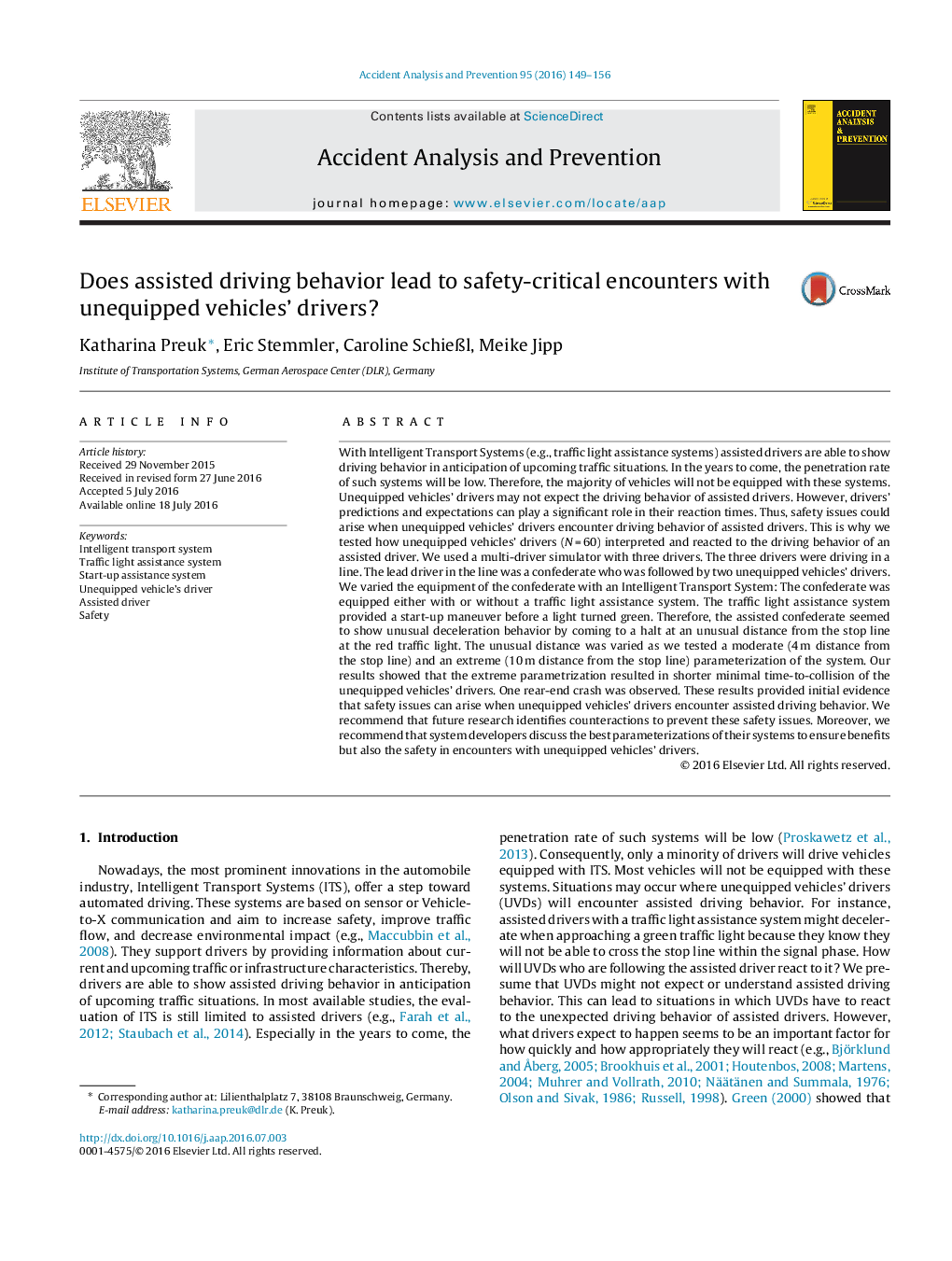| کد مقاله | کد نشریه | سال انتشار | مقاله انگلیسی | نسخه تمام متن |
|---|---|---|---|---|
| 571923 | 877327 | 2016 | 8 صفحه PDF | دانلود رایگان |
عنوان انگلیسی مقاله ISI
Does assisted driving behavior lead to safety-critical encounters with unequipped vehicles' drivers?
دانلود مقاله + سفارش ترجمه
دانلود مقاله ISI انگلیسی
رایگان برای ایرانیان
موضوعات مرتبط
مهندسی و علوم پایه
مهندسی شیمی
بهداشت و امنیت شیمی
پیش نمایش صفحه اول مقاله

چکیده انگلیسی
With Intelligent Transport Systems (e.g., traffic light assistance systems) assisted drivers are able to show driving behavior in anticipation of upcoming traffic situations. In the years to come, the penetration rate of such systems will be low. Therefore, the majority of vehicles will not be equipped with these systems. Unequipped vehicles' drivers may not expect the driving behavior of assisted drivers. However, drivers' predictions and expectations can play a significant role in their reaction times. Thus, safety issues could arise when unequipped vehicles' drivers encounter driving behavior of assisted drivers. This is why we tested how unequipped vehicles' drivers (NÂ =Â 60) interpreted and reacted to the driving behavior of an assisted driver. We used a multi-driver simulator with three drivers. The three drivers were driving in a line. The lead driver in the line was a confederate who was followed by two unequipped vehicles' drivers. We varied the equipment of the confederate with an Intelligent Transport System: The confederate was equipped either with or without a traffic light assistance system. The traffic light assistance system provided a start-up maneuver before a light turned green. Therefore, the assisted confederate seemed to show unusual deceleration behavior by coming to a halt at an unusual distance from the stop line at the red traffic light. The unusual distance was varied as we tested a moderate (4Â m distance from the stop line) and an extreme (10Â m distance from the stop line) parameterization of the system. Our results showed that the extreme parametrization resulted in shorter minimal time-to-collision of the unequipped vehicles' drivers. One rear-end crash was observed. These results provided initial evidence that safety issues can arise when unequipped vehicles' drivers encounter assisted driving behavior. We recommend that future research identifies counteractions to prevent these safety issues. Moreover, we recommend that system developers discuss the best parameterizations of their systems to ensure benefits but also the safety in encounters with unequipped vehicles' drivers.
ناشر
Database: Elsevier - ScienceDirect (ساینس دایرکت)
Journal: Accident Analysis & Prevention - Volume 95, Part A, October 2016, Pages 149-156
Journal: Accident Analysis & Prevention - Volume 95, Part A, October 2016, Pages 149-156
نویسندگان
Katharina Preuk, Eric Stemmler, Caroline SchieÃl, Meike Jipp,